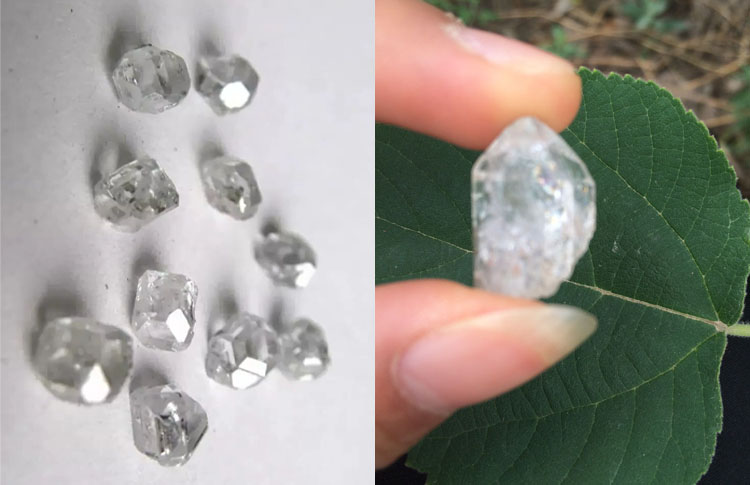The naked eye identification of rough diamonds should start from the following aspects:
(1) Observa el brillo
Because a diamond has a special diamond luster, it is an important feature to distinguish other colorless and transparent minerals (o materiales). Although some artificial materials are close to diamonds in some physical and chemical properties, they can also have strong diamond luster, but highly Experienced diamond scientists can use luster characteristics to distinguish diamonds from other imitations with an intuition that is only comprehensible and inexpressible.
When observing the luster of diamonds, it is also necessary to pay attention to the fact that the crystal surface patterns on the surface of some diamond roughs are very developed, which affects the observation of luster. The luster should be observed from the smooth crystal plane as much as possible to avoid illusions.
(2) Observe the appearance and surface characteristics of diamonds
en diamantes en bruto, well-developed crystals occupy a considerable number. In the previous section, we introduced the common crystal forms of diamonds. Observing the crystal forms, can also help us identify diamonds. The most common crystal forms of diamonds are octahedrons, cubes, and aggregates. In colorless and transparent minerals, this can occur. There are few minerals in several crystal forms, even if they have similar shapes, como la espinela incolora, diamante, etc., but they can be distinguished from each other because of other properties that are far from diamonds. In addition to observing the crystal form of the rough, Another feature is the crystal face pattern of diamonds. Different crystal faces of diamonds often have characteristic growth patterns (patrones de cara de cristal), such as triangular growth patterns on octahedral crystal planes, and stepped growth patterns on hexahedral crystal planes that are parallel to each other. etc., which can be used as identifying characteristics of diamonds.

(3) Estimating the density of diamonds
Among all natural minerals or artificial materials that are similar in appearance to diamonds, except for topaz, the density values of other varieties are different from those of diamonds to a certain extent. When you measure them with your hands, they feel different and can be "beater" to distinguish between diamonds and diamonds. its imitations. It should be noted that this method can only be used if the samples are almost the same size. Otherwise, it will cause fallacy. This method is most suitable for distinguishing diamonds of the same size from synthetic cubic zirconia. Since the density of diamonds is 3.52g/cm3, the density of cubic zirconium is about 5.95g/cm3, which is almost the same as that of diamonds. Once it is doubled, the feeling of the hand is obviously different, and it is easy to distinguish.
Using a pencil to identify the authenticity of a diamond is a relatively simple method. This was discovered by a Soviet expert in the past. This simple method is very popular among ordinary diamond lovers. por supuesto, only using a pencil to identify it is definitely not absolutely reliable.
When identifying, first wet the diamond with water, and then gently scratch it with a pencil. On the crystal surface of a real diamond, the place where the pencil scratches will leave no trace, and if it is not a diamond, it is glass, crystal and other materials will leave traces on the surface.
